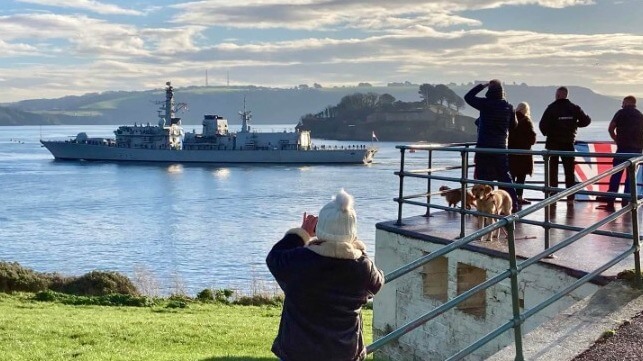Royal Navy Dispatches a Third Warship to Red Sea

The Royal Navy and the Italian Navy are dispatching additional warships to the Red Sea, augmenting a growing number of allied naval vessels that have deployed to the area in order to protect merchant shipping from Yemen’s Houthi rebels.
The frigate HMS Richmond has departed for Suez to join the destroyer HMS Diamond and the frigate HMS Lancaster, the Royal Navy announced Tuesday. The extra vessel will relieve Diamond or Lancaster when needed so that the task force can rotate out for replenishment or maintenance. Richmond carries the Sea-Ceptor anti-missile system and can defend herself and nearby shipping from Houthi threats.
Lancaster was already in the region as part of a long-term presence “east of Suez,” supporting the Combined Maritime Forces mission to combat smuggling and piracy. HMS Diamond, an advanced air-defense destroyer, deployed to the Red Sea to help protect ships from Houthi drone and missile attacks.
The UK has previously threatened to strike back at Houthi militants if the group does not cease its aggression against shipping. Houthi attacks continued unabated after the UK’s warning, and after a similar warning from a coalition of a dozen nations.
HMS Richmond has been busy, according to the Royal Navy. In December, she was deployed to the freezing waters of the Baltic to help Britain’s allies protect unspecified subsea infrastructure. She will now shift gears and head for the heat of the Persian Gulf.
The government of Sri Lanka has also announced plans to dispatch a ship to join the flotilla, likely an offshore patrol vessel. Neighboring India has sent perhaps the most naval tonnage of any nation, reflecting the serious impact of the Houthi threat on the Indian economy: according to one analyst’s estimate, the effects on freight traffic and rates could shave $30 billion off of India’s exports this year (about seven percent).
By comparison, European governments have made limited contributions. France, Spain and Italy have one ship each in the area. The German government has called for an independent pan-European mission with a similar scope, but it is facing pressure to act more quickly: Germany’s industrial and business interests want their nation's armed forces to contribute to the peacekeeping mission. Almost all Asia-North Europe containerized freight is diverting around the Cape of Good Hope, skipping the Suez Canal and adding 10 days to each transit. That adds delays and costs for German shippers, including big-name industrial mainstays of the German economy. These firms depend on parts and supplies from East Asia, and after years of recovery from the COVID era’s disruption, they now face supply-chain uncertainty once more.
